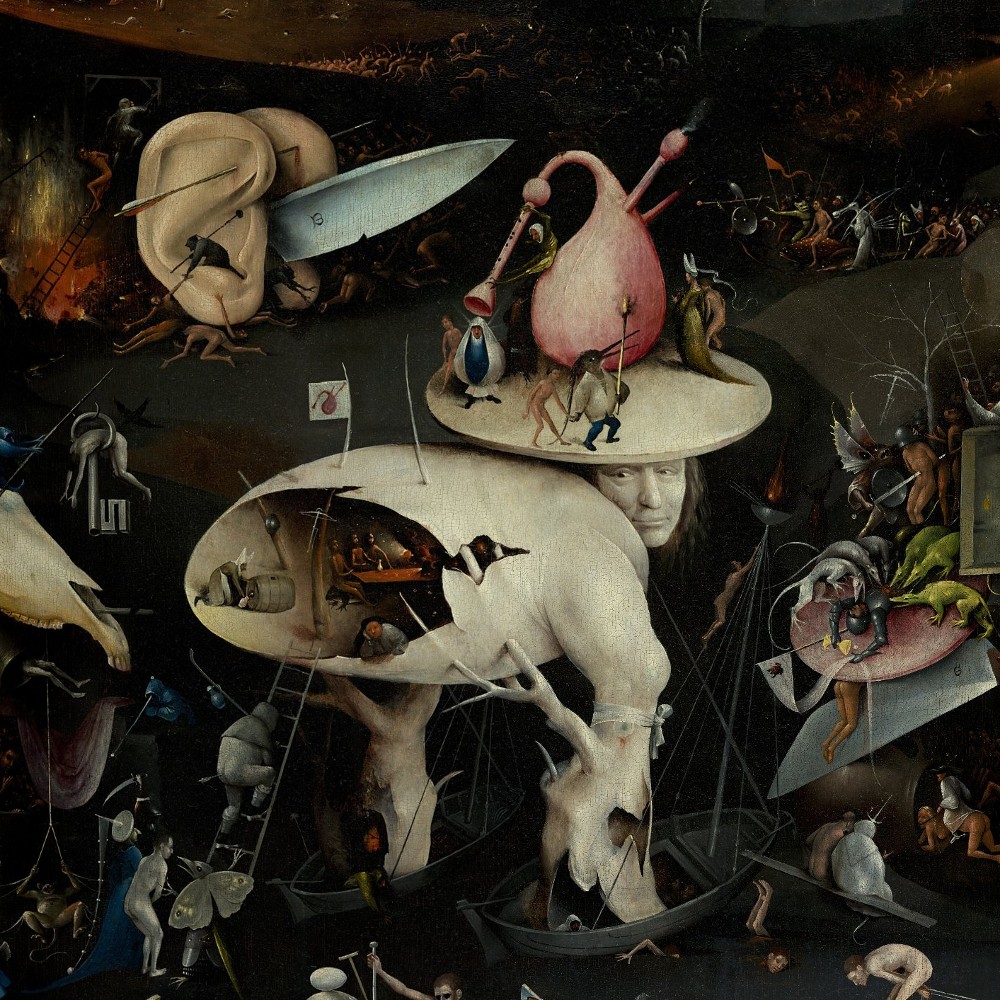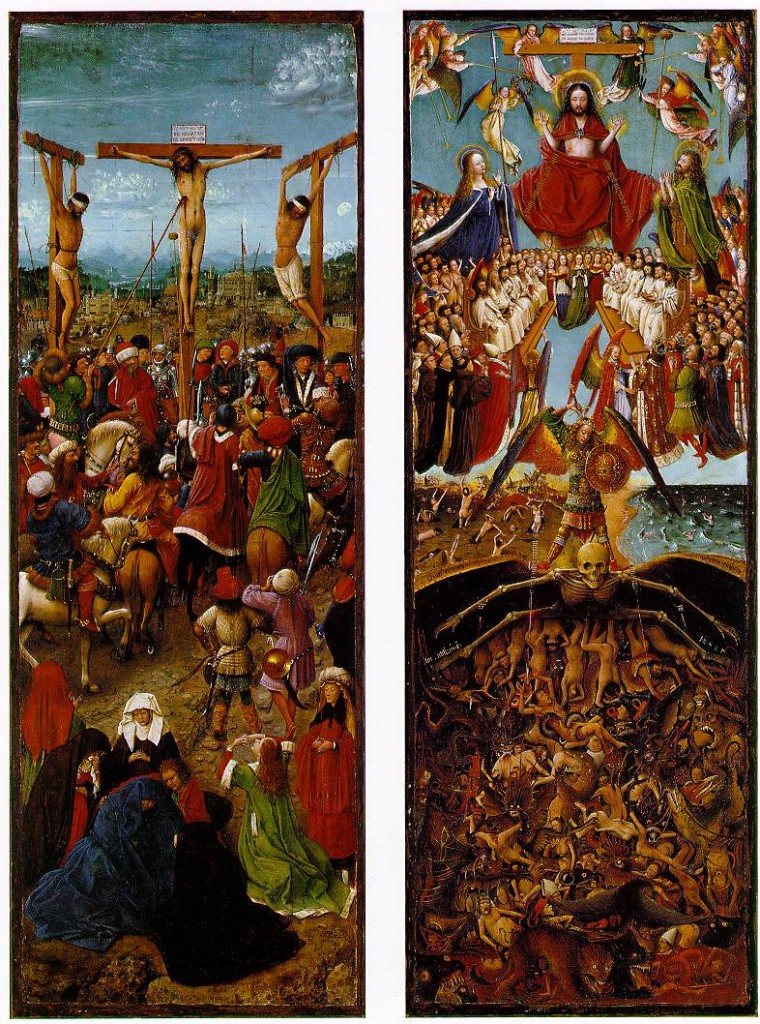If we go back to the Middle Ages, we enter a realm when reason was put into service of the miraculous, and science, as such, was half fantasy. There was little theorizing. Hieronymous Bosch’s Hell was painted in specific, minute detail since the existence of Hell was accepted and its horrors could be catalogued and believed quite easily by Medieval man. Gargoyles could rub shoulders with Resurrections and Ascensions, and monsters were a kind of gay deity helping to decorate the setting of saints and Last Judgements.

—Jews, on the other hand, insist that performing sacred acts while alive on earth is our ultimate objective; heaven is merely where we receive our reward after our goal has been attained. The Talmud, in this regard, makes a statement that any Christian would find mind-boggling: “One hour obeying God’s commandments in this world is more glorious than an eternity in the World to Come.”—click image for source…
Bosch was probably the most terrifying of the medieval painters of the fantastic, working as he did, at the end of the Middle Ages when the conviction of sin was stronger in the human spirit than the sense and belief in grace. By extension, looking at some works by Van Eyck also conveys, in its microscopic depictions of natural objects, a sense of spiritual meaning through the current for the times conception, that every particle of matter was inherently significant because all existence was part of an orderly scheme created by god.

—Maimonides’ argument bears striking parallels to Christian defences of the Trinity against heretics or polemicists who imagine that the Son, the Father and the Holy Spirit are separate gods, and together are three gods, not one.
Look again at Maimonides’ logic regarding the “parts” of the soul:
By the word “parts”, however, they do not intend to imply that the soul is divided into parts as are bodies, but they merely enumerate the different activities of the soul as being parts of a whole, the union of which makes up the soul.—click image for source…
Bosch’s universe is as detailed as Van Eyck’s, but the focus is reversed and we are plunged into the depths of sin and the evil that goes with damnation of the soul resulting in an outlandish and horrifying whole where logic and illogic collide blurring their given connotations in a very toxic misdirection of divine order smudging the human being with a spiritual torture where condemned souls are squashed under the weight of unreason.
ADDENDUM:
(see link at end)…would accept as the Jewish metaphor for what happens after death:
Immediately following death, there is a period known as Hibbut-Ha-Kever, pangs of the grave. During this period, the soul is confused, lingers around the body, and tries to go back to his home and be with his loved ones. After this, there is a maximum period of 12 months in Gehenna, which is a realm described as fiery where the soul is purified of its sins. The custom of reciting Kaddish for one‘s parents for 11 months was instituted by Rabbi Moses ben Israel Isserles of Cracow in the sixteenth century. His rationale was that since twelve months in Gehanna was the maximum punishment for sinners, one would not want to assume that one‘s dead father of mother had been allocated the maximum punishment. After being purified in Gehanna, the soul goes to Gan Eden.
The perfectly righteous don‘t have to pass through Gehanna. The completely and unrepentant wicked are ―cut off, and have no portion in Olam Ha Ba (the world to come).Gan Eden is viewed as another transitory phase; there will be a physical resurrection, after which, the souls will reside in a spitualized state of existence in the Olam Ha Ba.
Yo
y be surprised that I included a belief in physical resurrection as part of what would be considered normative Judaism today. The reason I include it is that belief in resurrection is one of Rambam‘s thirteen principles of faith, which we recite as part of our liturgy in Yigdal, which is certainly still considered mainstream today.Read More:http://www.neshamah.net/images/jewish-views-of-the-afterlife.pdf







 COMMENTS
COMMENTS